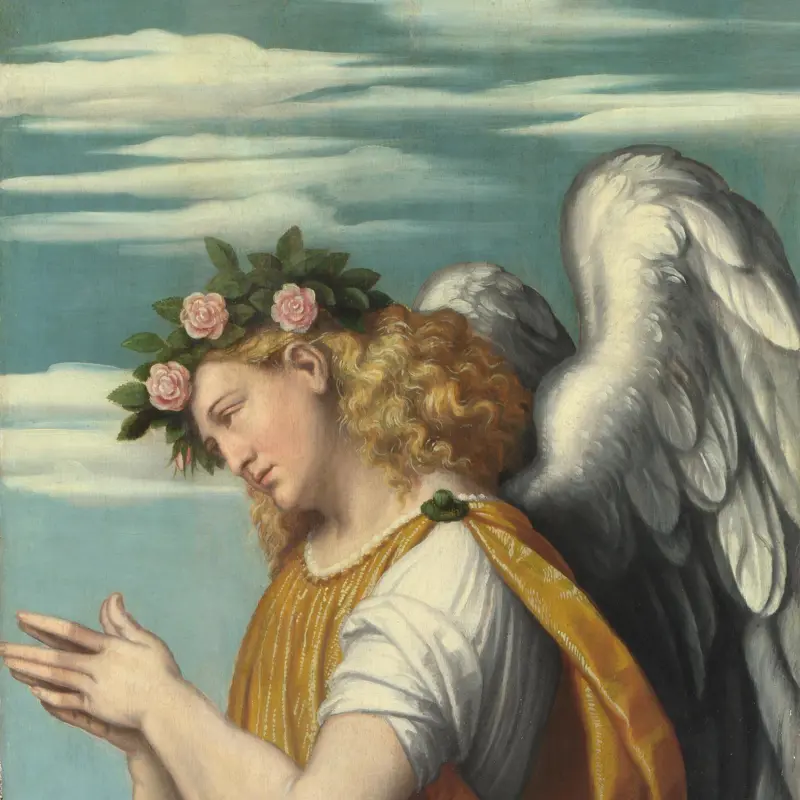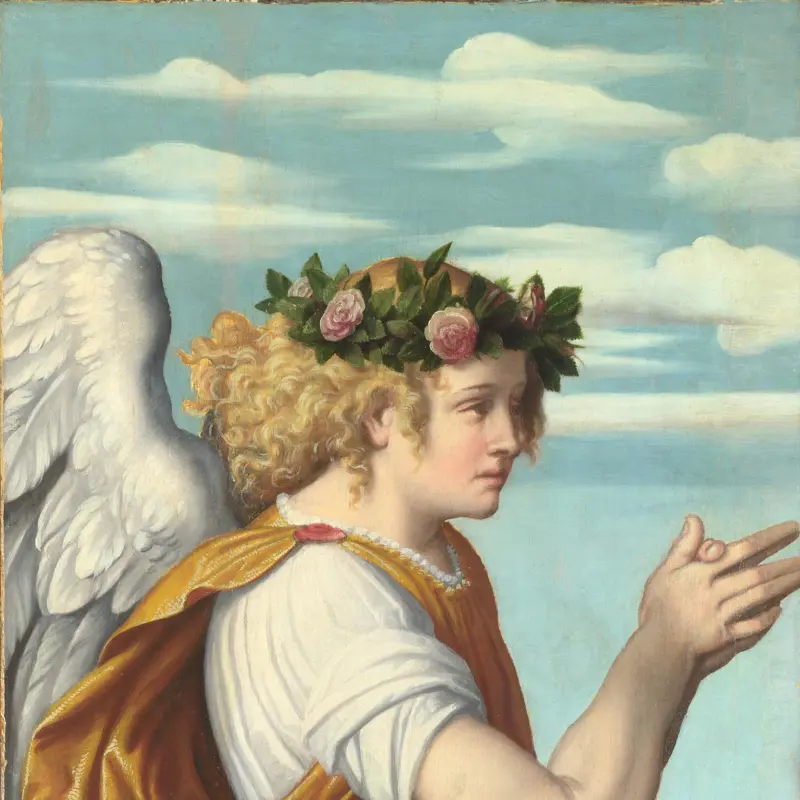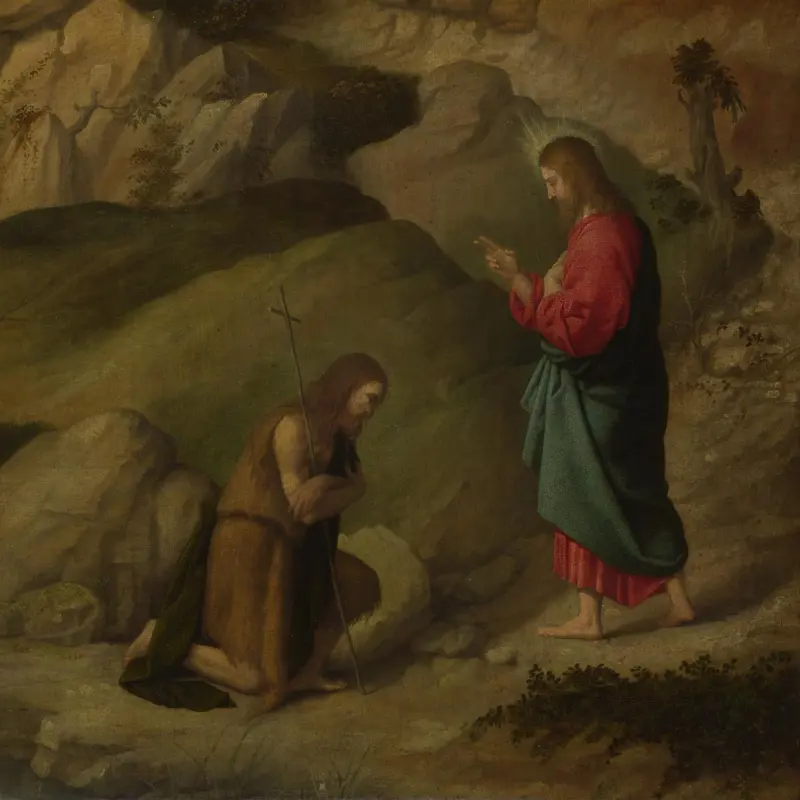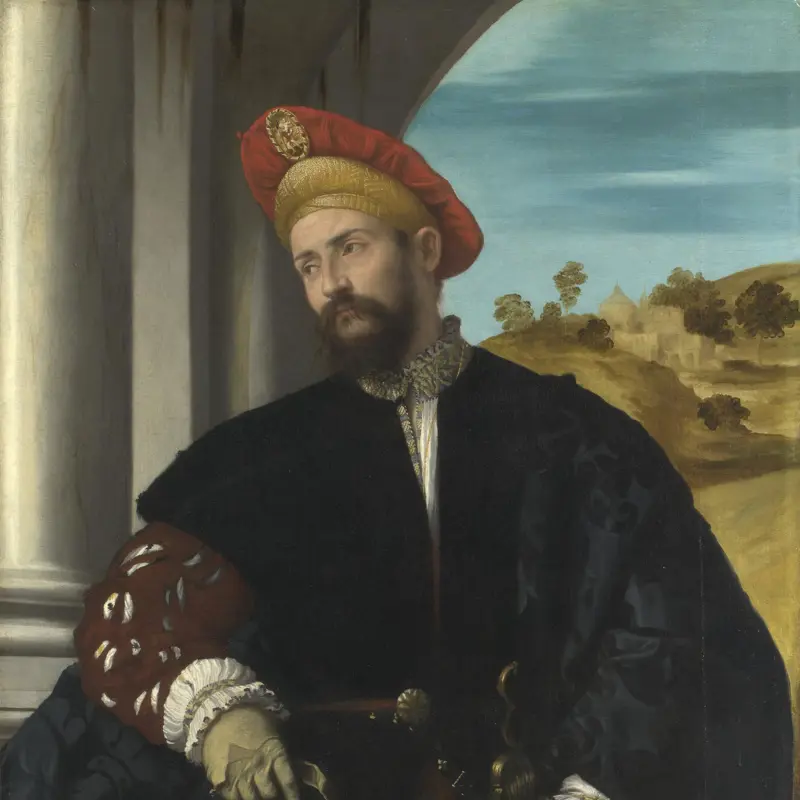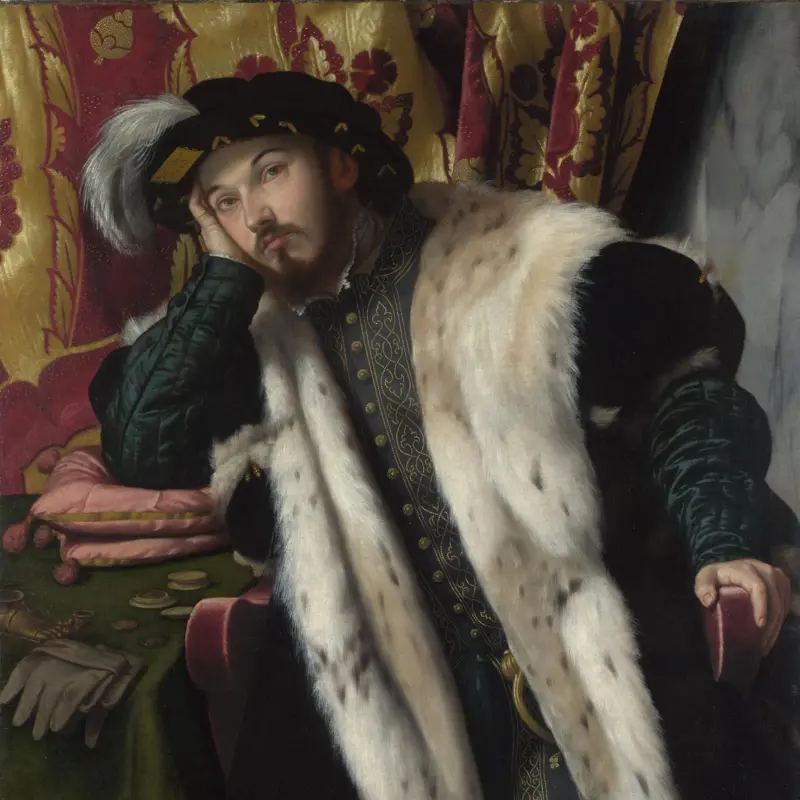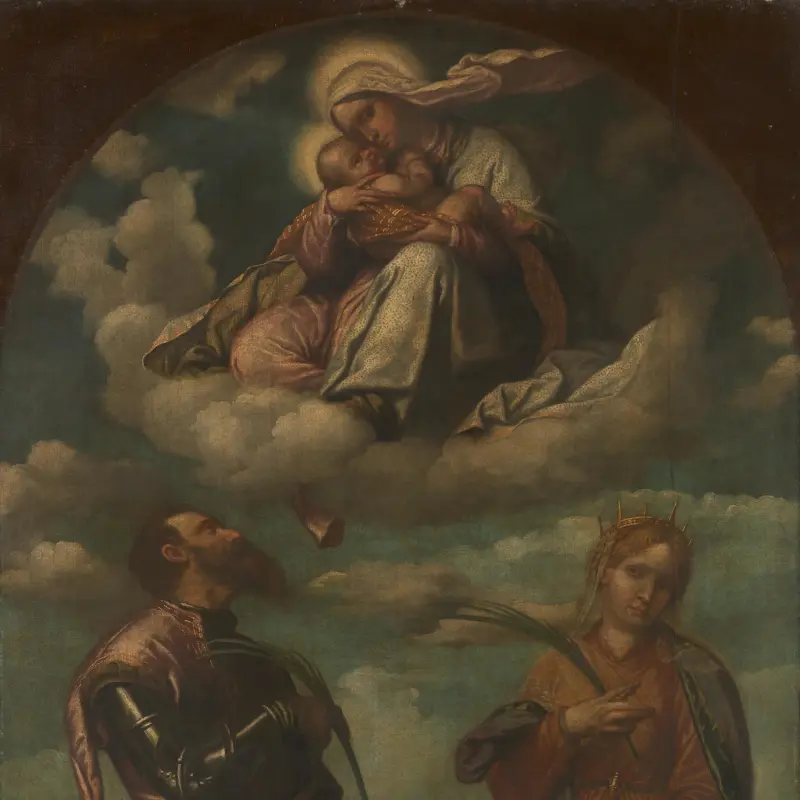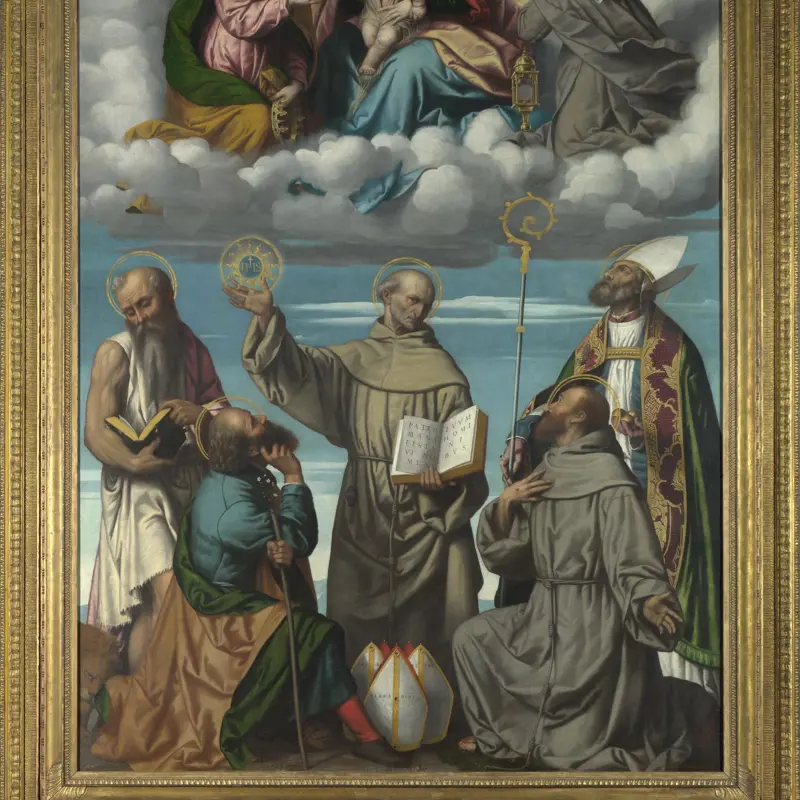Moretto da Brescia, 'Saint Joseph', about 1540
About the work
Overview
This is one of four panels that originally made up a pair of painted shutters to cover a central image, probably of the Virgin Mary crowned in the heavens. The outside of each shutter was decorated with a saint, the inside with an angel. When the shutters were closed, Saint Joseph would have been on the left.
Saint Joseph is more commonly portrayed as an elderly man, but here he is quite young, with a full dark beard and a turban. He appears like this in other paintings by Moretto.
Joseph’s staff is blossoming with flowers of the oleander plant, which is sometimes known in Italian as mazza di San Giuseppe (‘Staff of Saint Joseph’). The flowering rod represents the staff that broke into blossom to show that Joseph was chosen to marry the Virgin Mary, as told in the Golden Legend, a thirteenth-century compilation of stories about the saints.
Key facts
Details
- Full title
- Saint Joseph
- Artist
- Moretto da Brescia
- Artist dates
- About 1498 - 1554
- Part of the series
- Shutters from a Triptych
- Date made
- About 1540
- Medium and support
- Oil on wood
- Dimensions
- 153.6 × 54.1 cm
- Acquisition credit
- Bequeathed by the Misses Cohen as part of the John Samuel collection, 1906
- Inventory number
- NG2092
- Location
- Not on display
- Collection
- Main Collection
Provenance
Additional information
Text extracted from the ‘Provenance’ section of the catalogue entry in Nicholas Penny, ‘National Gallery Catalogues: The Sixteenth Century Italian Paintings’, vol. 1, ‘Paintings from Bergamo, Brescia and Cremona’, London 2004; for further information, see the full catalogue entry.
Bibliography
-
1962Gould, Cecil, National Gallery Catalogues: The Sixteenth Century Italian Schools (excluding the Venetian), London 1962
-
1987Gould, Cecil, National Gallery Catalogues: The Sixteenth Century Italian Schools, London 1987
-
2001
C. Baker and T. Henry, The National Gallery: Complete Illustrated Catalogue, London 2001
-
2004
Penny, Nicholas, National Gallery Catalogues: The Sixteenth Century Italian Paintings, 1, Paintings from Bergamo, Brescia and Cremona, London 2004
About this record
If you know more about this work or have spotted an error, please contact us. Please note that exhibition histories are listed from 2009 onwards. Bibliographies may not be complete; more comprehensive information is available in the National Gallery Library.
Images
About the series: Shutters from a Triptych
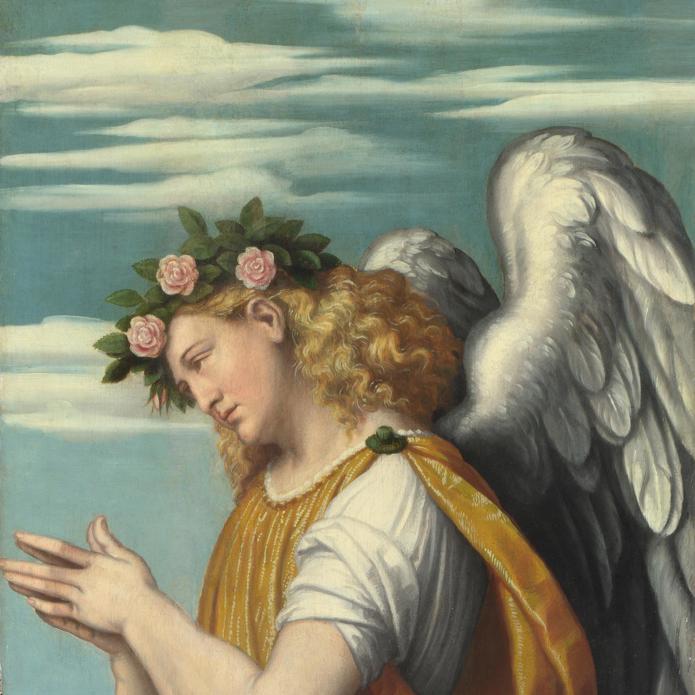
Overview
These four paintings come from a pair of shutters that were painted on both sides. The angel facing right was originally on the reverse of the shutter painted with Saint Joseph, who has a dark beard and turban and holds a book and flowering rod. The angel facing left was on the reverse of the shutter painted with Saint Jerome, who wears an abbot’s hat and reads a book. The two shutters had been divided into four paintings by the mid-nineteenth century, probably to make them easier to display as gallery pictures.
In their original form, when the shutters were closed only Saint Joseph and Saint Jerome would have been visible. When they were open, the angels would have flanked a central image, most likely showing the Virgin Mary crowned or about to be crowned in the heavens. The shutters probably date from the end of Moretto’s career and may be by his workshop.

